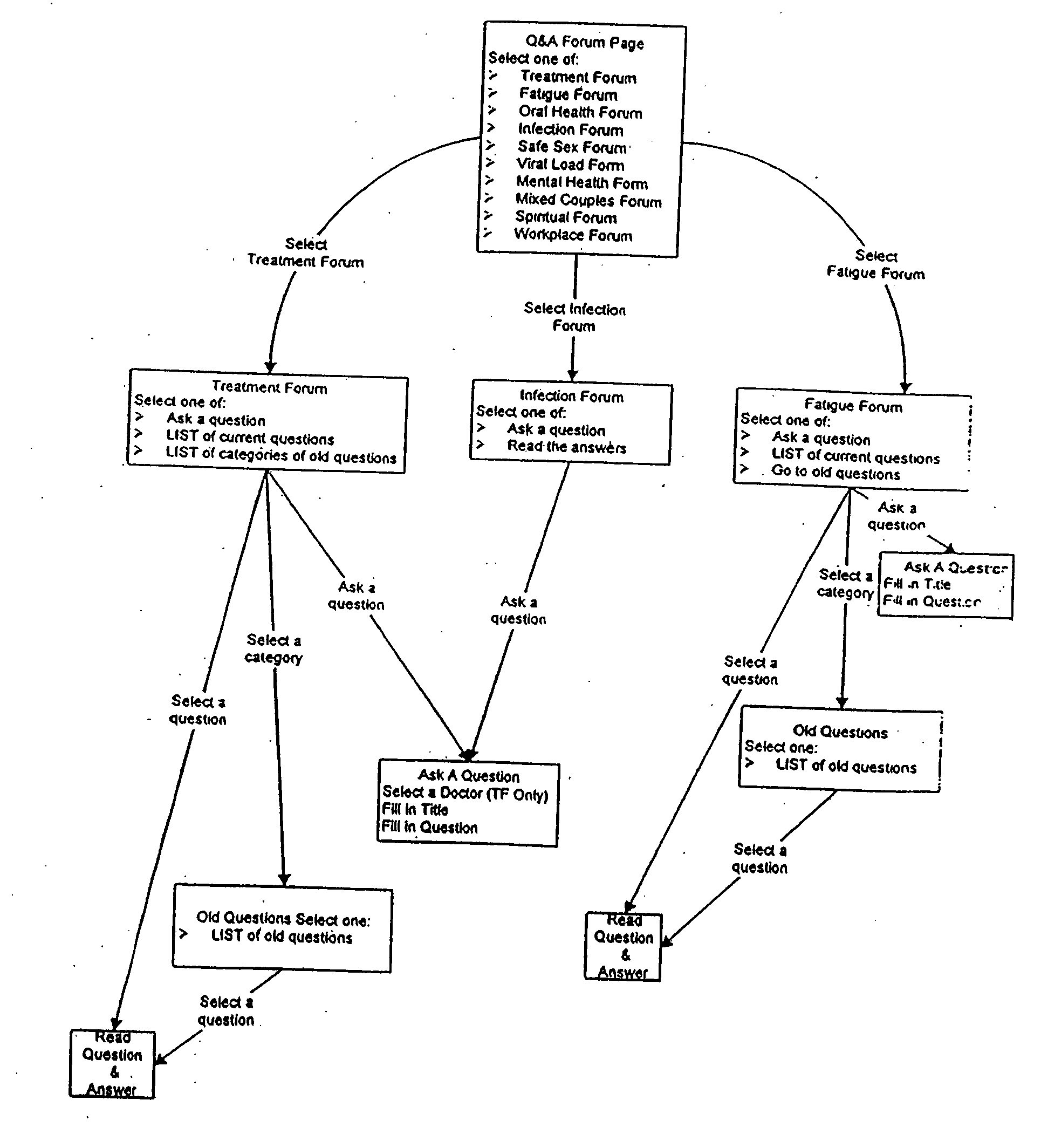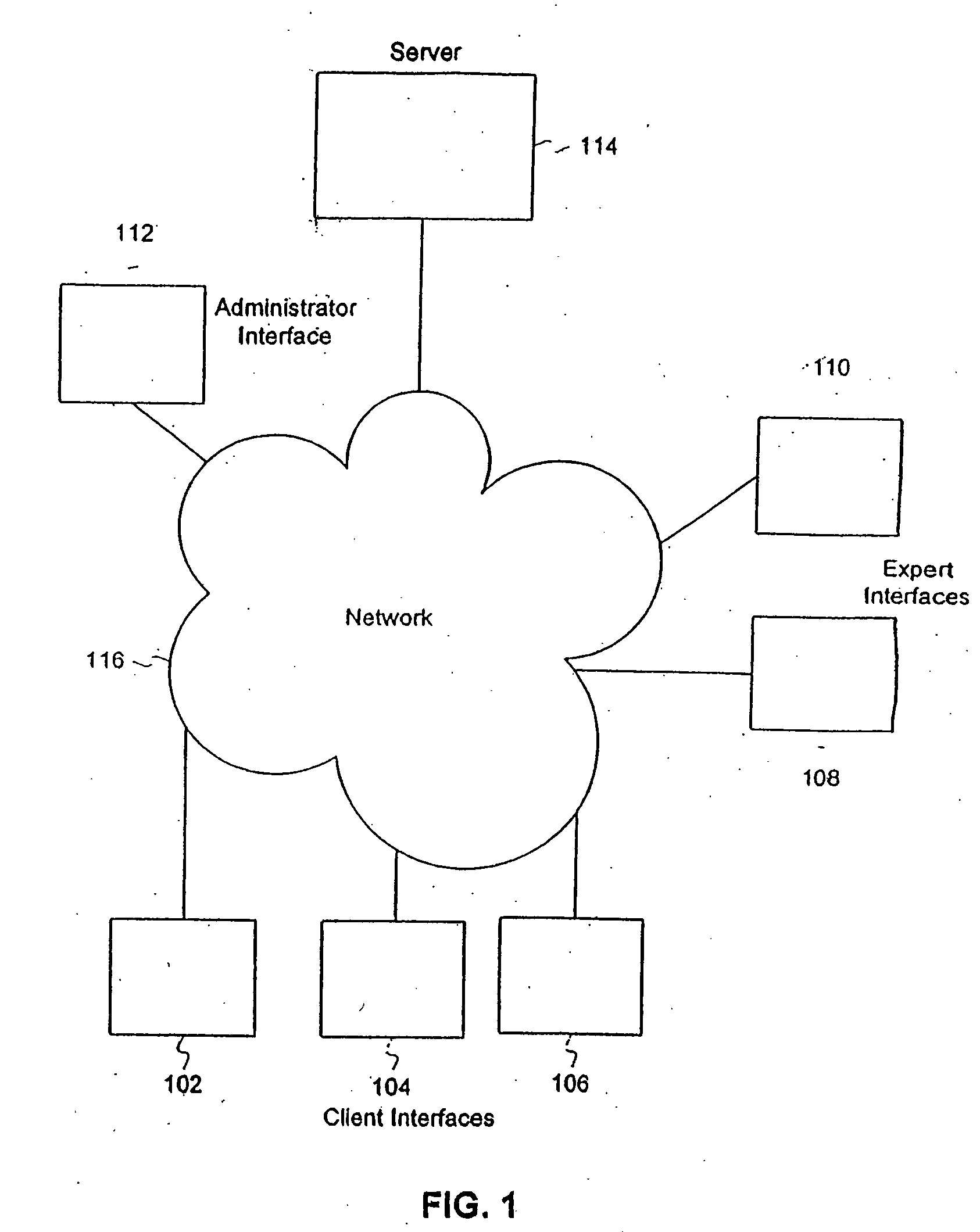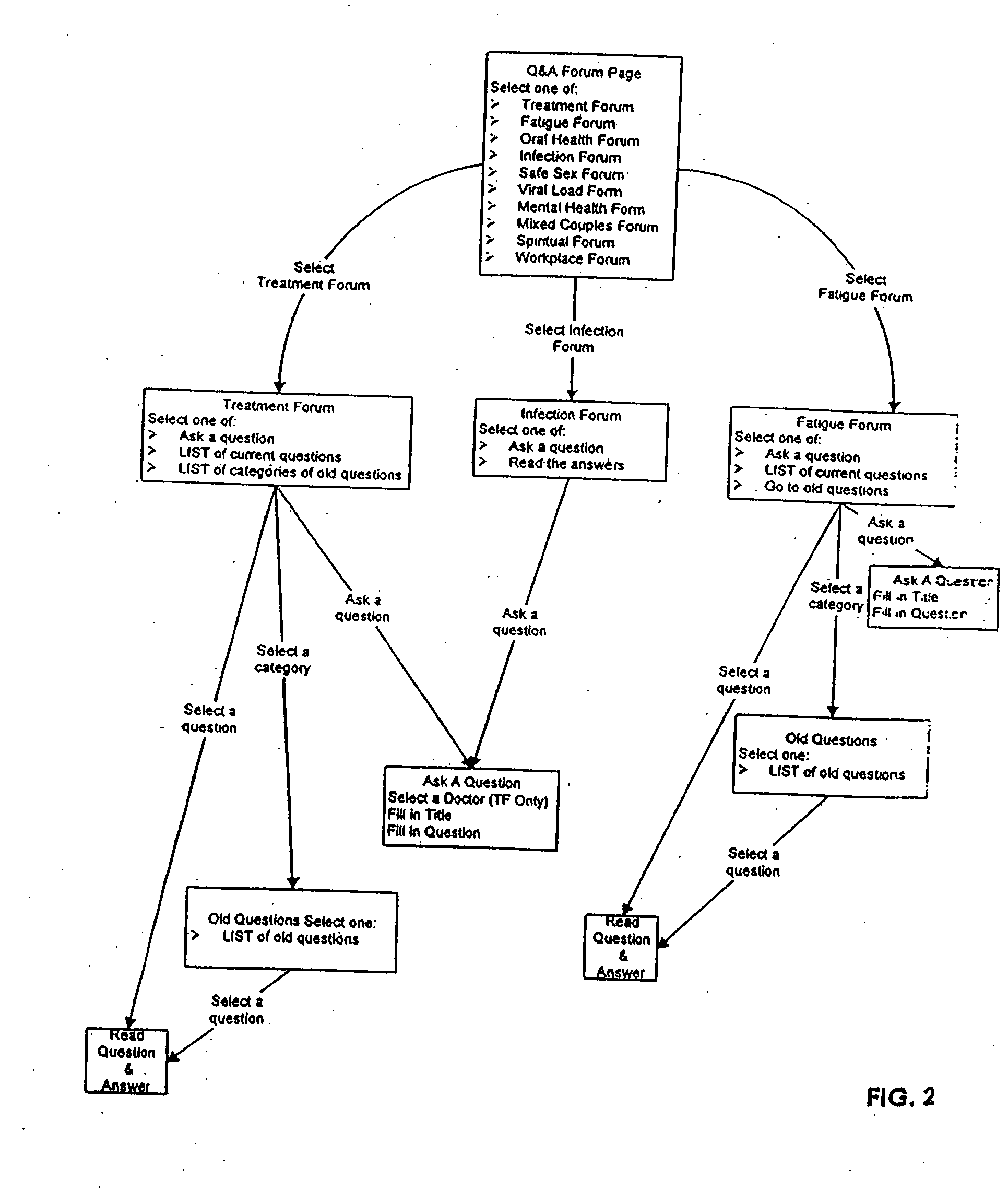System and method for supporting multiple question and answer fora in different web sites
- Summary
- Abstract
- Description
- Claims
- Application Information
AI Technical Summary
Benefits of technology
Problems solved by technology
Method used
Image
Examples
Embodiment Construction
[0048] Systems and methods consistent with the present invention allow users to obtain information on a given subject by interacting with experts on that subject. Users can get answers to their questions either by asking a question or by reviewing answers to questions that others have posed. If asked a question, an expert can either provide an answer or refer the question to another expert. An expert can also act as peer review personnel by reviewing the responses posted by another expert. In addition, experts and / or peer review personnel can post their responses in any forum, category, and network site they desire.
[0049] In one embodiment, users can visit a web site to have their AIDS- and HIV-related questions answered by doctors and other experts in the field. The site provides several benefits to users. For instance, it lowers barriers between patients and clinicians, demystifies HUV / AIDS and its treatment, improves patients' quality of life and fosters community through human ...
PUM
 Login to View More
Login to View More Abstract
Description
Claims
Application Information
 Login to View More
Login to View More - R&D
- Intellectual Property
- Life Sciences
- Materials
- Tech Scout
- Unparalleled Data Quality
- Higher Quality Content
- 60% Fewer Hallucinations
Browse by: Latest US Patents, China's latest patents, Technical Efficacy Thesaurus, Application Domain, Technology Topic, Popular Technical Reports.
© 2025 PatSnap. All rights reserved.Legal|Privacy policy|Modern Slavery Act Transparency Statement|Sitemap|About US| Contact US: help@patsnap.com



